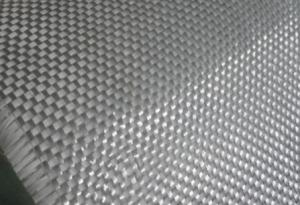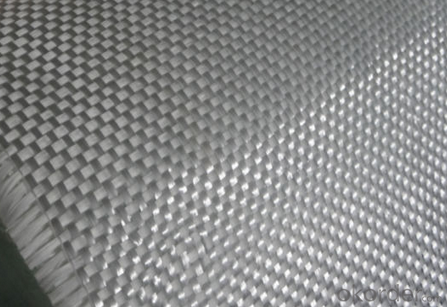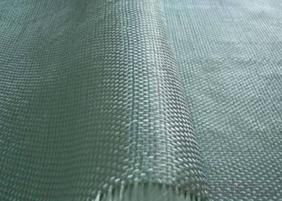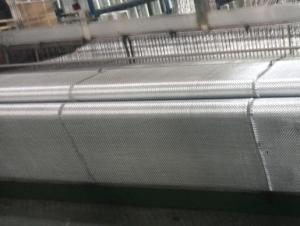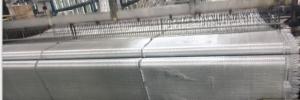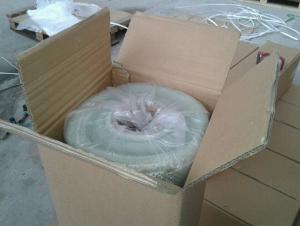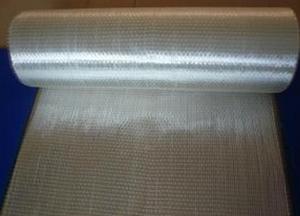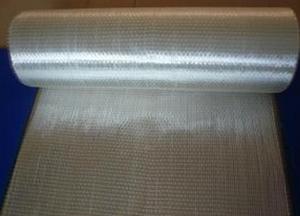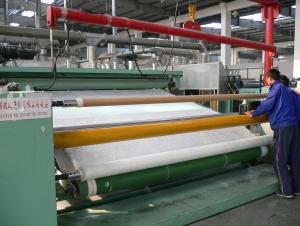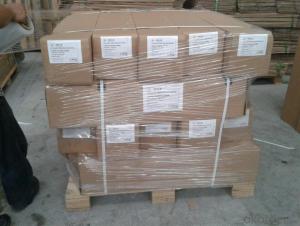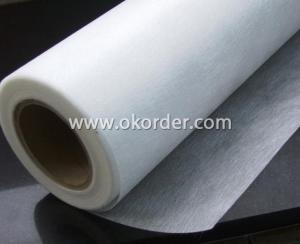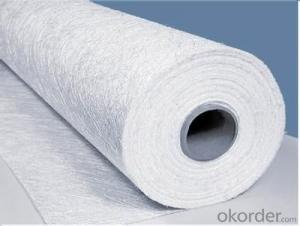Fiberglass Mat Tissue E-Glass Fiberglass Woven Roving 800g 1200mm
- Loading Port:
- Shanghai
- Payment Terms:
- TT or LC
- Min Order Qty:
- 3000 kg
- Supply Capability:
- 50000 kg/month
OKorder Service Pledge
OKorder Financial Service
You Might Also Like
Structure of woven roving Description
Woven roving is made of direct rovings in Plain,Twill weave pattern.The input rovings are designed to give controlled wet-out and excellent laminate properties. It is compatible with Polyester,Vinyl ester and Epoxy resin and widely used in hand machine production, such as boats,vessels,plane and automotive parts,furniture,sports and other areas.
Main Features of the woven roving
Consistet thickness and excellent surface treatment;
Rapid impregnating and good compatibility with resin;
Uniform tension, high dimensional stability and easy operation;
Good mechanical properties and high strength of parts
Woven roving Images
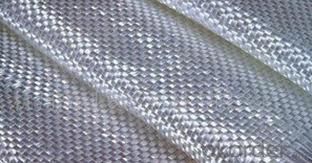
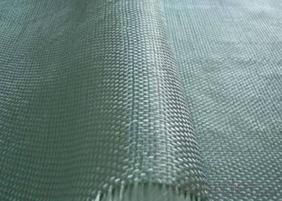
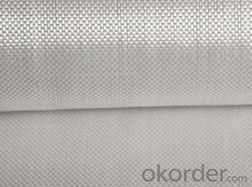
Woven roving Specification:
Normal type | EWR800 | EWR400 | EWR300 | EWR500 | EWR600 |
Thickness (mm) | 0.8 | 0.4 | 0.3 | 0.5 | 0.6 |
Density(warpxweft) (end/cm) | 1.8x1.5+/-10% | 3.6x3.2+/-10% | 4.6x4.1+/-10% | 2.2X2.0+/-10% | 2.6X2.4+/-10% |
Tex (warpxweft) | 2400x2400 | 600X600 | 300x400 | 1200x1200 | 1200X1200 |
Moisture content(%) | <0.2% | <0.2% | <0.2% | <0.2% | <0.2% |
Loss on ignition(%) | 0.4 – 0.8 | 0.4-0.8 | 0.4-0.8 | 0.4-08 | 0.4-0.8 |
Width(cm) | 125+/-1 | 125+/-1 | 125+/-1 | 125+/-1 | 125+/-1 |
Weight (g/m2) | 816+/-41 | 408+/-32 | 300+/-15 | 500+/-25 | 600+/-30 |
Weight per roll(kg) | 45 | 46 | 50 | 45 | 45 |
Glass | E-glass | E-glass | E-glass | E-glass | E-glass |
FAQ of woven roving:
1.Q: What specification do you have for e-glass woven roving ?
A: Now our normal specification have 400/450/500/600/800g/m2, But 200 - 1600g/m2 are available.
2.Q:How about the width?
A:The normal width is 1040mm and 1270mm, can be from 50mm to 3000mm.
3.Q:How about the sample delivery?
A.Small sample is free of charge, sample ready time 3-5days.
4.Q:How about the delivery time?
A:It is depend on the order quantity, three 20'ft container around 20days.
Application of Fiberglass Woven Roving:
a) boats ,vessels ,plane
b) automotive parts ,furniture and sports facilities
c) resins system,such as polyeser,vinylester and epoxy resins
- Q: What is the impact resistance of fiberglass mat tissue at high temperatures?
- The impact resistance of fiberglass mat tissue can vary at high temperatures, depending on factors like its specific composition, the manufacturing process, and the testing conditions. In general, fiberglass mat tissue has good impact resistance at high temperatures due to the inherent strength and durability of fiberglass materials. Fiberglass is recognized for its excellent mechanical properties, including high tensile strength and stiffness, which contribute to its overall impact resistance. Typically, fiberglass mat tissue maintains its structural integrity and can withstand impact without cracking or breaking at high temperatures. This is because the fiberglass fibers are designed to endure high temperatures and do not easily soften or deform. However, it's worth noting that the impact resistance of fiberglass mat tissue can be affected by other factors like the presence of additives or binders used during manufacturing. Some additives or binders may decrease impact resistance or make the tissue more prone to damage at high temperatures. To determine the specific impact resistance of a particular fiberglass mat tissue at high temperatures, it's crucial to refer to the manufacturer's specifications or conduct specific tests under controlled conditions. These tests can provide more precise information on how the material will perform under impact at elevated temperatures.
- Q: Can fiberglass mat tissue be used for insulation in oil refineries?
- No, fiberglass mat tissue is not suitable for insulation in oil refineries. Fiberglass mat tissue is primarily used in construction and automotive industries for reinforcement purposes. It is not designed to withstand the extreme temperatures and corrosive environments found in oil refineries. Instead, insulation materials used in oil refineries are typically made of fire-resistant and chemically resistant materials, such as mineral wool or calcium silicate. These materials are specifically engineered to provide optimal thermal insulation and safety in refinery operations.
- Q: Does fiberglass mat tissue absorb water?
- Yes, fiberglass mat tissue does absorb water.
- Q: What is the cost of fiberglass mat tissue?
- The price of fiberglass mat tissue can fluctuate based on a variety of factors including the brand, quality, quantity, and location. Typically, the cost per square foot for fiberglass mat tissue falls between $0.50 and $2. However, it is crucial to consider that prices may vary depending on the project's specific requirements and the supplier or retailer from whom it is obtained. To ensure the best value and appropriateness for your needs, it is advisable to conduct thorough research and compare prices from different sources.
- Q: Can fiberglass mat tissue be used for insulation in cold environments?
- Indeed, fiberglass mat tissue is a viable option for insulation purposes in frigid settings. Fiberglass, renowned for its remarkable thermal characteristics, is frequently employed as an insulating material. Its capacity to hinder heat transfer is owed to its low thermal conductivity, effectively ensuring insulation in cold environments. Tailored specifically for thermal insulation, fiberglass mat tissue is commonly utilized in various applications such as walls, roofs, and floors to thwart heat dissipation and maintain a cozy indoor temperature. Moreover, fiberglass boasts resistance to moisture and exhibits durability, rendering it impervious to degradation and loss of insulating properties in cold and damp conditions. Consequently, fiberglass emerges as an apt choice for insulation in cold environments.
- Q: Can fiberglass mat tissue be used for repairing fiberglass jet skis?
- Yes, fiberglass mat tissue can be used for repairing fiberglass jet skis. It is a common material used in fiberglass repairs, providing strength and reinforcement to the damaged area.
- Q: What is the moisture absorption rate of fiberglass mat tissue?
- The moisture absorption rate of fiberglass mat tissue is relatively low, as fiberglass is known for its water-resistant properties.
- Q: How does fiberglass mat tissue compare to other reinforcing materials, such as carbon fiber or kevlar?
- Various industries commonly use fiberglass mat tissue, carbon fiber, and Kevlar as reinforcing materials due to their high strength and durability. However, they differ in composition and properties, resulting in different applications and performance characteristics. Fiberglass mat tissue consists of fine glass fibers randomly bonded together with a binder. It possesses excellent tensile strength, corrosion resistance, and affordability, making it widely used in construction, automotive, and marine industries. Additionally, its high flexibility enables easy conformation to complex shapes. However, it may not possess the same strength-to-weight ratio as carbon fiber or Kevlar. Carbon fiber comprises tightly woven thin strands of carbon atoms, creating an incredibly strong and lightweight material. It boasts a higher tensile strength than fiberglass mat tissue, making it suitable for applications that prioritize weight reduction and high strength, such as aerospace, sports equipment, and automotive components. Furthermore, carbon fiber exhibits exceptional stiffness and fatigue resistance, albeit at a higher cost compared to fiberglass mat tissue. In contrast, Kevlar is an aramid fiber renowned for its exceptional strength-to-weight ratio, impact resistance, and abrasion resistance. It finds extensive use in applications requiring high impact resistance, including bulletproof vests, helmets, and protective clothing. While Kevlar surpasses fiberglass mat tissue in strength, it may lack the same level of rigidity as carbon fiber. Moreover, Kevlar is more expensive than fiberglass mat tissue but less expensive than carbon fiber. In summary, fiberglass mat tissue, carbon fiber, and Kevlar possess unique characteristics and advantages. Fiberglass mat tissue is versatile, cost-effective, and flexible, while carbon fiber offers outstanding strength and stiffness. Kevlar excels in impact resistance and durability. The choice of reinforcing material depends on specific application requirements, cost considerations, and desired performance characteristics.
- Q: Can fiberglass mat tissue be used for insulation in research laboratories?
- Yes, fiberglass mat tissue can be used for insulation in research laboratories. Fiberglass mat tissue is a common material used for thermal and acoustic insulation due to its excellent insulation properties. It is highly resistant to heat, moisture, and chemicals, making it suitable for laboratory settings. Additionally, fiberglass mat tissue is lightweight and easy to install, allowing for quick and efficient insulation in research laboratories. Its low thermal conductivity helps to maintain stable temperature conditions, ensuring optimal conditions for experiments and reducing energy consumption. Therefore, fiberglass mat tissue is a viable choice for insulation in research laboratories.
- Q: Can fiberglass mat tissue be used in marine applications?
- Certainly! Fiberglass mat tissue finds its utility in the realm of marine applications. It is a lightweight and flexible substance that is extensively employed in the construction and repair of boats. Its commendable strength and durability render it suitable for marine environments that entail exposure to water, salt, and other severe conditions. It is frequently employed as a reinforcement layer in the fabrication of boat hulls, decks, and other structural constituents. Its incorporation augments the strength and rigidity of composite materials employed in marine applications, thus bolstering their overall performance and lifespan. Furthermore, fiberglass mat tissue exhibits resistance to corrosion and possesses favorable water resistance properties, rendering it an apt choice for marine applications.
Send your message to us
Fiberglass Mat Tissue E-Glass Fiberglass Woven Roving 800g 1200mm
- Loading Port:
- Shanghai
- Payment Terms:
- TT or LC
- Min Order Qty:
- 3000 kg
- Supply Capability:
- 50000 kg/month
OKorder Service Pledge
OKorder Financial Service
Similar products
Hot products
Hot Searches
Related keywords
